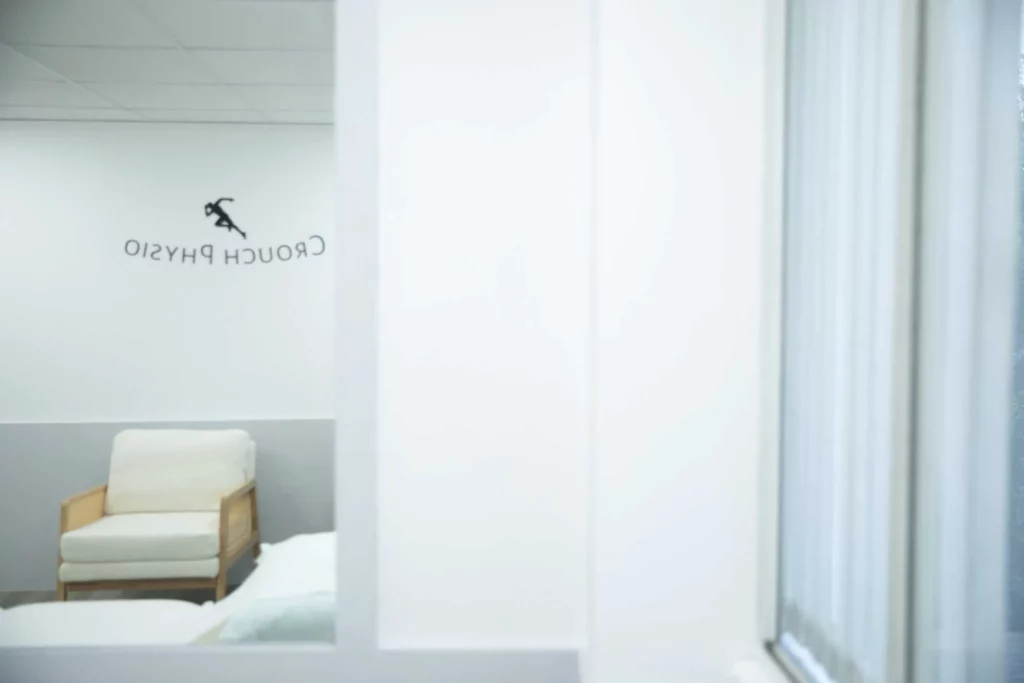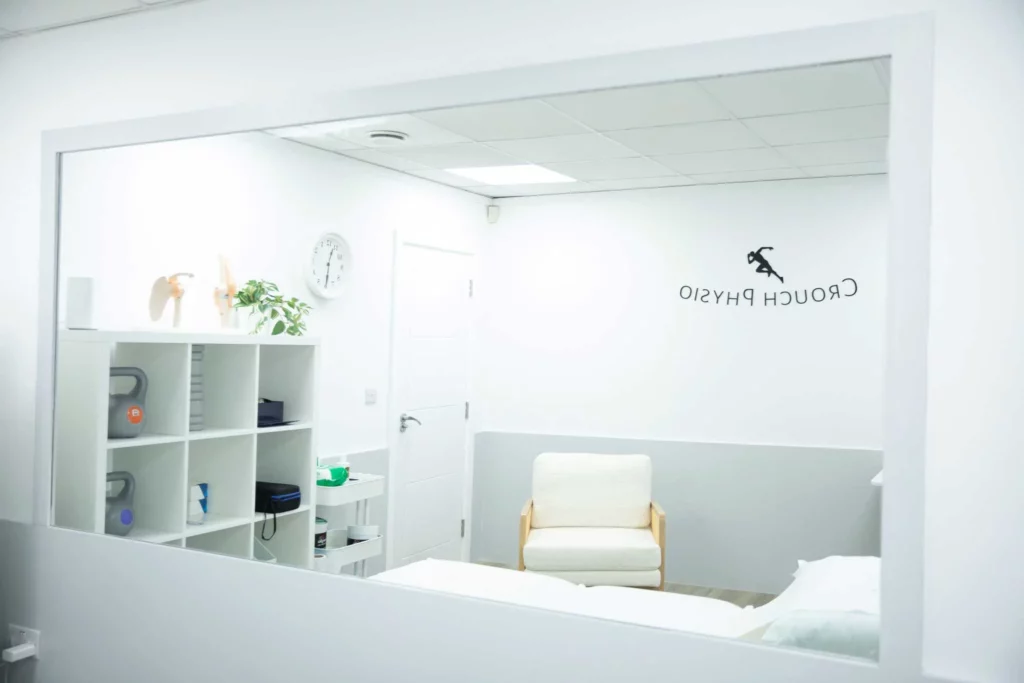The winter sports season is upon us! Whether you’re gearing up for some skiing, snowboarding, or lacing up your skates, winter activities offer both excitement and the potential for injury. As a physiotherapist, I’ve seen my fair share of sprained ankles, torn ligaments, and muscle strains during these colder months. But don’t let that put you off! With the right preparation and a focus on injury prevention, you can enjoy your winter sports safely.
Here’s a look at some of the most common winter sports and my tips for reducing the risk of injury while making the most of the season.
Skiing & Snowboarding: Protecting Knees and Core
Skiing and snowboarding are incredibly popular winter sports, but they also lead to a fair number of injuries, especially to the knees. The twisting, high-speed movements involved in both activities make the anterior cruciate ligament (ACL) particularly vulnerable. ACL injuries typically occur when a skier or snowboarder falls and twists their knee in an unnatural way. So, how can you protect yourself from these types of injuries?
- Strengthen Your Core and Lower Body: Strong leg muscles and a solid core will give you greater control and stability, helping you stay safe on the slopes. Exercises such as squats, lunges, and planks are excellent for building endurance and strength (1).
2. Warm-Up: Cold muscles are far more prone to injury, so a good warm-up is essential before hitting the slopes. A dynamic warm-up—focusing on stretching and light cardio—will help loosen your muscles.
3. Use Proper Technique: Maintaining proper form, especially when landing jumps, can significantly reduce the strain on your knees and other joints. Lessons can be invaluable for beginners or those wanting to refine their skills (2).
4. Know Your Limits: It’s tempting to push yourself, but trying out advanced runs or stunts beyond your skill level is a recipe for injury. Stick to your ability level and build your confidence gradually (3).
Ice Skating & Ice Hockey: Preventing Falls and Injuries
Ice skating, whether for recreation or sport (I’m looking at you, ice hockey enthusiasts!), involves constant movement on a slippery surface, which brings a high risk of falls. And while a fall in the snow might not hurt too much, the hard ice can lead to serious injuries such as wrist fractures and head trauma, especially for those without protective gear.
To skate safely, keep these tips in mind:
- Wear Protective Gear: Helmets, wrist guards, and padded shorts are essential, particularly for beginners or those playing contact sports like ice hockey.
- Improve Your Balance and Coordination: Balance is key for ice skating, and incorporating balance exercises such as single-leg stands and yoga into your routine will improve your stability on the ice (4).
- Learn How to Fall Properly: Falling is inevitable, but learning how to fall correctly can minimise injuries. Try to bend your knees and fall onto your side, avoiding the instinct to catch yourself with your hands, which often leads to wrist fractures.
- Condition for Agility: Ice hockey requires quick direction changes and bursts of speed, so agility training and plyometric exercises are essential for improving reaction times and reducing the risk of collisions (5).
Cross-Country Skiing: Building Endurance Without Overuse
Cross-country skiing is an excellent full-body workout, but the repetitive motion and long durations can lead to overuse injuries, particularly in the shoulders, knees, and lower back. Without proper conditioning, it’s easy to strain muscles and tendons.
Here’s how to avoid those common overuse injuries:
1. Build Cardiovascular Endurance: Cross-country skiing is very demanding on the cardiovascular system, so ensuring you have good aerobic fitness through activities like running, cycling, or swimming will help reduce fatigue and prevent injury.
2. Strengthen Your Upper Body: Unlike downhill skiing, cross-country requires significant upper body strength for propulsion. Incorporating exercises like push-ups and resistance band training can help you build the endurance needed for those long trails.
3. Avoid Overtraining: Start with shorter distances and gradually increase your time on the snow. Overdoing it too soon often results in tendonitis and joint pain (6).
Snowshoeing: Safe and Steady on the Trails
Snowshoeing may seem like a more leisurely winter activity, but the uneven terrain and snow’s natural resistance can place a lot of strain on your body. The most common injuries I’ve seen in snowshoeing include ankle sprains, knee pain, and lower back strain.
Here’s how to stay injury-free on the trails:
1. Wear Supportive Footwear: Good snowshoes are only part of the equation. A solid, waterproof pair of boots with proper ankle support will reduce the risk of twisting your ankle.
2. Take Care on Descents: Most snowshoeing injuries happen on downhill sections, where the added resistance of snow can make you less stable. Slow down, and keep your knees bent slightly to take the pressure off your joints.
3. Stretch Regularly: Snowshoeing works your legs and lower back hard. Stretching your hamstrings, hip flexors, and lower back will help prevent tightness and strain during and after your trek (7).
Final Thoughts
From a physiotherapist’s perspective, the best approach to winter sports is prevention through preparation. Building strength, improving flexibility, and understanding the specific demands of your chosen sport will greatly reduce your risk of injury. And, of course, if you do sustain an injury, early intervention and treatment will prevent long-term damage.
So, warm up, stay mindful of your body, and hit the slopes or ice with confidence! Winter sports are meant to be enjoyed, and with a little preparation, you’ll stay safe and have plenty of fun this season.
Our Barnet, Cockfosters & Enfield Physio’s have tons of experience and are specialists in dealing with injury prevention. Have confidence that our specialist Physiotherapists will closely assess, diagnose & treat you in the correct & evidence-based way for all injuries. You can book an appointment here.
Blog By: Emre Oz (Musculoskeletal Physiotherapist at Crouch Physio).
References
1.Wei, Ming, et al. “Correlation between core stability and the landing kinetics of elite aerial skiing athletes.” Scientific Reports 13.1 (2023): 11239.
2.Westin, Maria, et al. “Prevention of anterior cruciate ligament injuries in competitive adolescent alpine skiers.” Frontiers in Sports and Active Living 2 (2020): 11.
3.Carus, Luis, and Isabel Castillo. “Injury prevention: individual factors affecting adult recreational snowboarders’ actual and estimated speeds on regular slopes.” PLoS one 16.2 (2021): e0246931.
4.LaPrade, Robert F., et al. “Epidemiology, identification, treatment and return to play of musculoskeletal-based ice hockey injuries.” British journal of sports medicine 48.1 (2014): 4-10.
5.Subramanian, Saru, et al. “Effectiveness of Plyometric Training versus Speed Agility Quickness Training on Agility and Performance among Elite Hockey Players-A Comparative Study.” (2024).
6.Korolev, Andrey, et al. “Cross-Country Skiing.” Epidemiology of Injuries in Sports. Berlin, Heidelberg: Springer Berlin Heidelberg, 2022. 131-136.
7.Bubnis, Matthew A., and Chad Hulsopple. “Human performance and injury prevention in cold weather environments.” Current sports medicine reports 21.4 (2022): 112-116.




